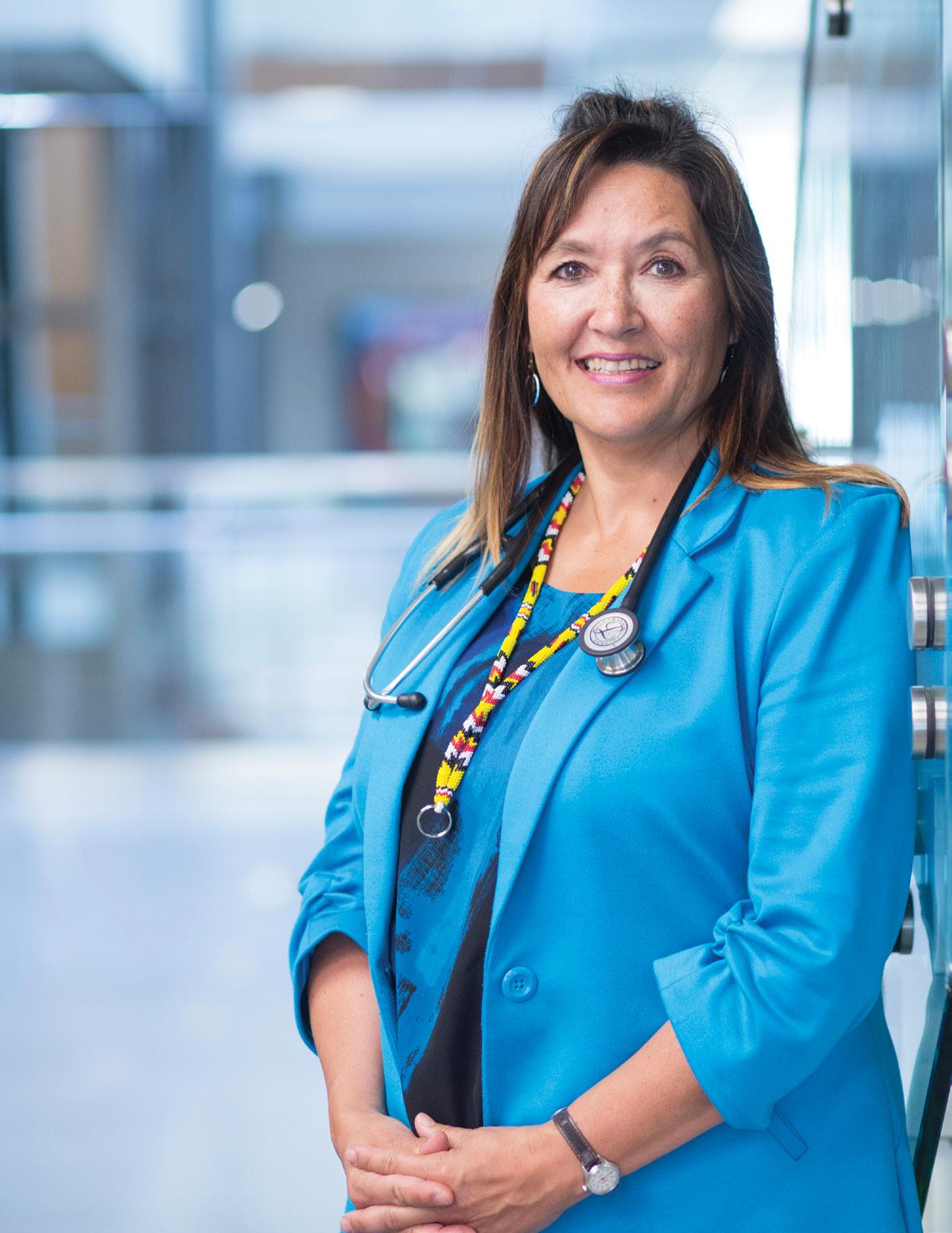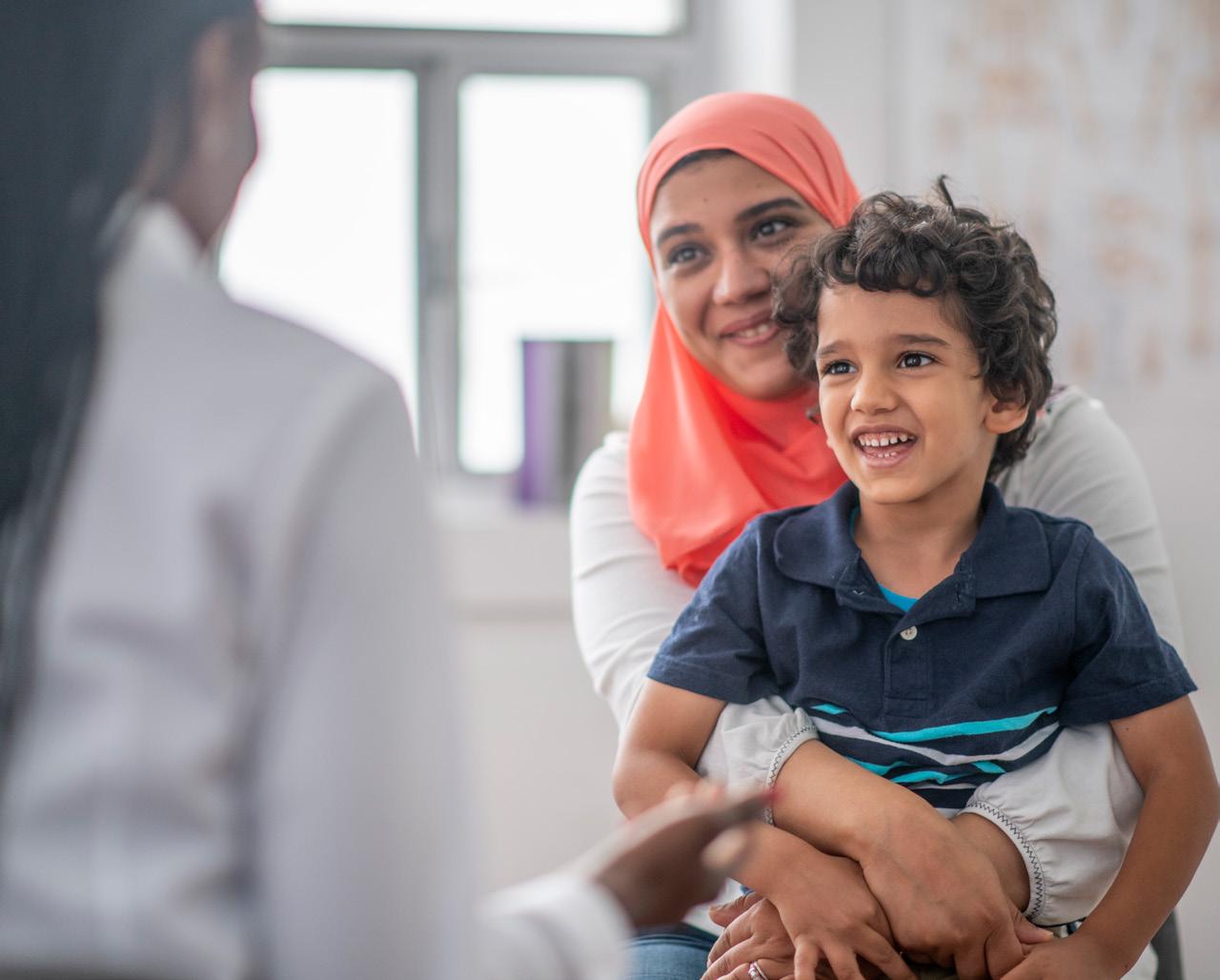
3 minute read
The call of the north
By Greg Basky
A pediatrician who cared for Dr. Veronica McKinney when she was a child first planted the seed that she could become a doctor. He had three boys, while Dr. McKinney was one of three girls in her family. “He would say, ‘Maybe we should just do a switch. You could be a doctor’s daughter and maybe you could become a doctor.’ I think even just that little idea (can have a big impact), to keep thinking about these things and keep dreaming.”
Today, some 46 years later, she is a Saskatchewan educated physician and director of Northern Medical Services – a tripartite organization involving the provincial Ministry of Health, Health Canada, and the College of Medicine, University of Saskatchewan. It is responsible for “the medical side of health” in the northern half of the province, explains Dr. McKinney, where the population is more than 85 per cent Indigenous – a percentage she notes is “higher than in the Yukon, the Northwest Territories ... even Nunavut.”
Dr. McKinney is working on a variety of different fronts – to increase access to care for people living in the north, conduct research that is directed by local communities, build greater cultural sensitivity and awareness among medical students and residents, and encourage Indigenous high school students to pursue medicine through mentoring.
Dr. McKinney began her medical career at the University of Saskatchewan’s College Of Medicine in 1998, after which she worked in emergency medicine in Saskatoon and La Ronge, then moved to B.C., where she continued clinical practice, spent time with an international air ambulance program, and served as site director for an aboriginal residency program at UBC’s College of Medicine.
This experience prepared her well for the leadership of Northern Medical Services. She returned to Saskatchewan in 2011 to take the job because she felt she could have a bigger impact on the health of Indigenous communities if she had a seat at tables where issues such as access and equity were being discussed.
“I enjoyed what I was doing, but could see that there were more opportunities to really have some say in what’s being done and how it’s being done,” says Dr. McKinney, whose family is from the North Battleford area and has ties to both the Waterhen Lake First Nation and Sweetgrass First Nation. “I was really feeling stymied and not really having a voice, and saw a lot of people speaking at tables around these things that didn’t have the background.”
Dr. McKinney feels her unique knowledge and experience enables her to have a strong relationship with Indigenous communities. She believes her clinical knowledge equips her to better support and advocate for the care of individuals, families, and communities. She supports northern communities by “ensuring that the Indigenous perspectives of health are honored and acknowledged” within the organizations that she works.
A calling to serve the north
All of the different roles she plays – drawing attention to inequities, providing a perspective that’s different from the mainstream, and advocating on behalf of Indigenous people living in communities served by Northern Medical Services – contribute to achieving the overarching goal of equitable health for all, according to Dr. McKinney. She says her traditional Indigenous ways call her to make things better for people living in the north, to contribute and help where she can.
“I believe I was led here specifically to use my unique talents, knowledge and skills to the fullest, to advocate and work with our communities, to teach others, and to walk the space between our Indigenous ways and the western world,” says Dr. McKinney, who still practises Tuesday and Thursday mornings at Saskatoon’s Westside Community Clinic. “Both are changing and part of my job is to find that middle ground so that health can be experienced by all. It is a tough place to be, but I feel that I am contributing in a meaningful and unique way, especially to our Indigenous communities. This is at the heart of why I am here.” ◆










